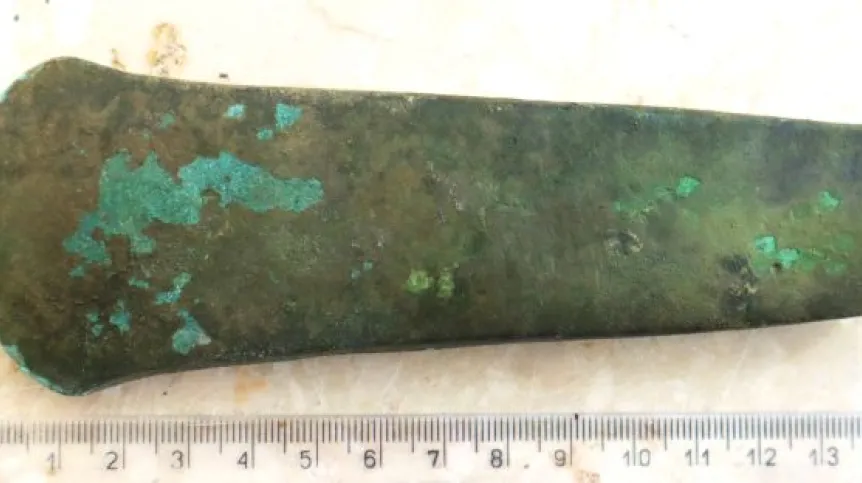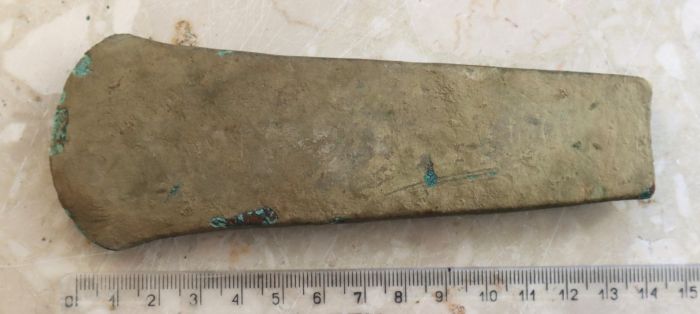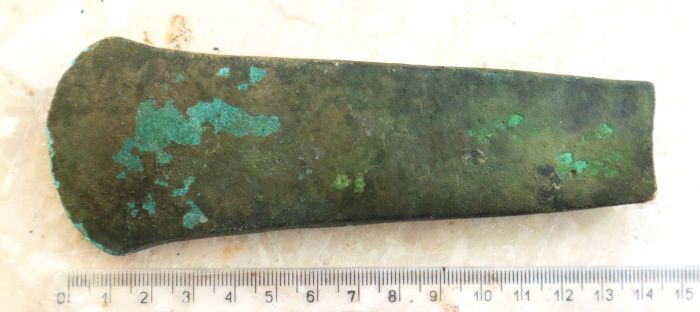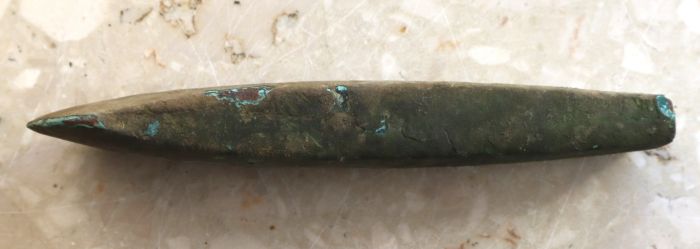
A 6,000-year-old copper axe thought to have been an offering to a deity has been unearthed by a detectorist in forests near Siennica Różana (Lublin Province).
'This discovery is of great importance for the science and history of the region,' says Paweł Wira, head of the Chełm branch of the Provincial Office for the Protection of Monuments in Lublin. The preliminary dating of the axe is the early Neolithic, i.e. approx. the 4th millennium BCE. This would mean that it has approx. 6,000 years old.
According to Wira, the tool could have been a votive offering for a deity.

The axe has the shape of a high trapezoid, approximately 14.5 cm long, with a slightly expanded fan-shaped cutting edge, a slightly concave rectangular head and weighs 678 g. It probably came to the Lublin region with the Lublin-Volhynian culture, as an import from the western part of the Carpathian Basin, i.e. the area of today's western Hungary, or from the Eastern Alps (southern Germany and Austria).

'In terms of scientific research, this is our most valuable find. Many a seeker can spend their whole life wandering around and not find anything equally valuable,’ says Edwin Rozwałka, president of the Historical and Ethnographic Association of the Lublin Land Enthusiasts "Wschód" from Widniówka.
According to Rozwałka, the discovery was made by a member of the association, Romuald Ościak, who was searching with a metal detector in the forest near Siennica Różana on April 7. In previous months, the same detectorist found a sickle from the Bronze Age, a medieval battle axe and 27 coins from the reign of King John II Casimir Vasa (so-called boratynki).
'We usually find elements of military equipment from World War I and II. Monuments from several thousand years ago are a nice change for us,' Rozwałka says.
His association was established in 2019 and belongs to the Polish Association of Explorers. He adds that the searchers obtained permit for the research from the Provincial Office for the Protection of Monuments and the Krasnystaw Forest District.

According to Wira, next week the artefact will be transferred to the Regional Museum in Krasnystaw, where it will be examined further. (PAP)
PAP - Science in Poland, Piotr Nowak
pin/ miś/ kap/
tr. RL













